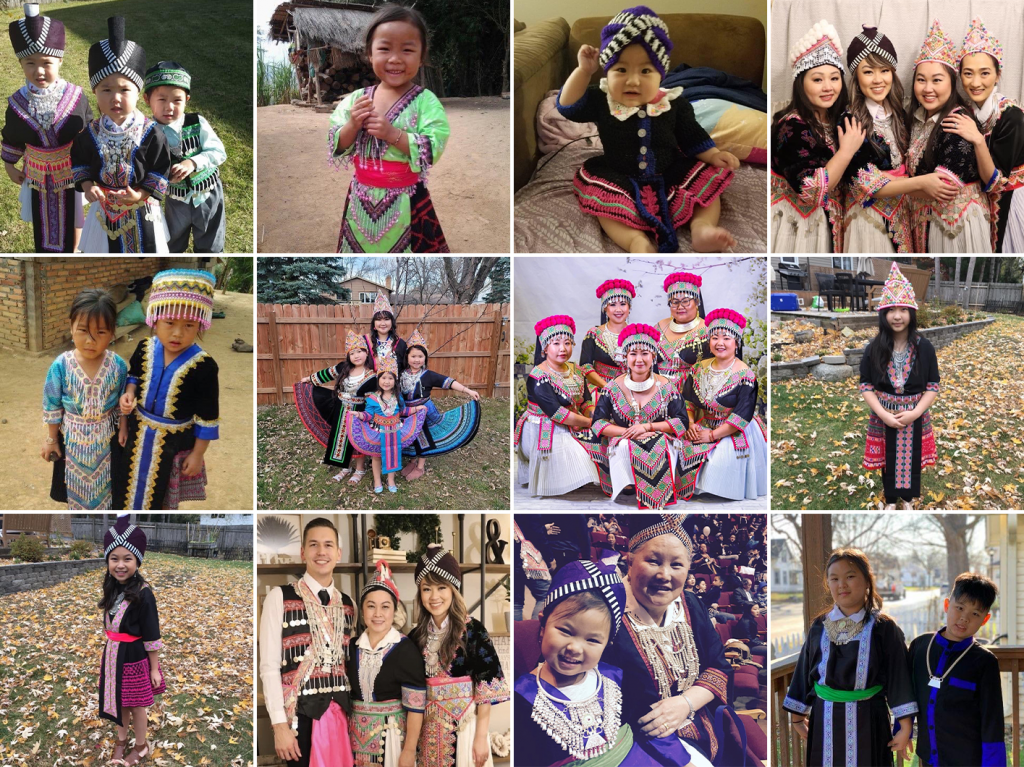Rooted in agricultural history and religious tradition, the Hmong New Year is an annual celebration that takes place at the end of the calendar year to honor and give thanks to ancestors and spirits for the completion of the year’s harvest, ask for blessings from the elders of the house and welcome a new beginning.
For followers of traditional practice, the Hmong religion believes in the shaman, a healing practitioner who acts as an intermediary between the spiritual and material world. Traditional practice of Hmong New Year includes an in-house ritual offering, typically in the form of animal sacrifices and burning joss money. During this in-house ritual, soul calling (Hmong translation – hu plig) is performed to call back every soul in the family to unite again. Annual rituals are also performed in each household for the family’s sacred wallpaper alter (thaj neeb made of xwmkab).
The celebration lasts anywhere from three days to one week. During that time, families and friends gather to share an abundance of food, preferably meat dishes, while wearing elaborately decorated Hmong clothes that vary depending on the wearers’ dialect. They partake in ball tossing (pov pob), a traditional courtship ritual, or other forms of entertainment such as singing love songs (hais kwv txhiaj), bullfights (nyuj sib nrau) and traditional dances (seev cev/ua la voo).
As religious traditions have changed throughout the years, so too have the religious and spiritual aspects of the Hmong New Year celebration. In 1949, missionaries evangelized to the Hmong people in Laos and from there began the conversion from Shamanism to Christianity. Hmong people who converted to Christianity began celebrating the Hmong New Year in a non-traditional way, typically leaving out spiritual rituals such as soul calling and offerings.
In Minnesota, the annual Hmong New Year celebration is held at the River Centre in St. Paul during the last weekend of November. The joyous celebration includes traditional entertainment mentioned above, along with the incorporation of beauty pageants, singing and dance competitions, sport tournaments, and food and vendor booths.
Hmong history
There is no written history of the Hmong people. Instead, history is passed down from generation to generation through oral story telling. Only recently have Hmong story cloths (paj ntaub) been produced by the hands of Hmong women to tell their family history. Archaeological findings propose that the Hmong people originated near the Yellow and Yangtze Rivers in China.
For centuries, Hmong people were able to freely live in remote areas of China. However, due to ongoing conflict with the Chinese rulers and military, Hmong people left in search of a new home. They settled in what is now Laos, Myanmar, Thailand and Vietnam. In 1947, the Hmong were recognized as citizens of Laos after their assistance in World War II.
In 1968, the Hmong people assisted Americans in the Vietnam War and Secret War of Laos. The Hmong fled to Thailand shortly after to escape being captured by the Laotian government who opposed Hmong assistance to the CIA during the Secret War.
The Hmong resettled in refugee camps overseen by non-governmental organizations in Thailand. Because of the Hmong people’s role in the American-led war in Laos, they eventually resettled again, this time in the United States beginning in December 1975. Many Hmong people ended up in Minneapolis-St. Paul, Minnesota, parts of Wisconsin and Fresno, California. The Hmong New Year gives families the chance to gather from near and far to celebrate what was originally the end of harvest season.
From the Children’s Minnesota Asian employee resource group (ERG) – Nyob Zoo Xyoo Tshiab (Happy Hmong New Year!)
